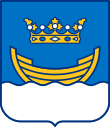
Finland, officially the Republic of Finland, is a Nordic country in Northern Europe. It shares land borders with Sweden to the northwest, Norway to the north, and Russia to the east, with the Gulf of Bothnia to the west and the Gulf of Finland across Estonia to the south. Finland covers an area of 338,455 square kilometres (130,678 sq mi) with a population of 5.6 million. Helsinki is the capital and largest city, forming a larger metropolitan area with the neighbouring cities of Espoo, Kauniainen, and Vantaa. The vast majority of the population are ethnic Finns. Finnish, alongside Swedish, are the official languages. Swedish is the native language of 5.2% of the population. Finland's climate varies from humid continental in the south to the boreal in the north. The land cover is primarily a boreal forest biome, with more than 180,000 recorded lakes.

Helsinki is the capital, primate, and most populous city of Finland. Located on the shore of the Gulf of Finland, it is the seat of the region of Uusimaa in southern Finland, and has a population of 658,864. The city's urban area has a population of 1,268,296, making it by far the most populous urban area in Finland as well as the country's most important center for politics, education, finance, culture, and research; while Tampere in the Pirkanmaa region, located 179 kilometres (111 mi) to the north from Helsinki, is the second largest urban area in Finland. Helsinki is located 80 kilometres (50 mi) north of Tallinn, Estonia, 400 km (250 mi) east of Stockholm, Sweden, and 300 km (190 mi) west of Saint Petersburg, Russia. It has close historical ties with these three cities.

Espoo is a city and municipality in the region of Uusimaa in the Republic of Finland. It is located on the northern shore of the Gulf of Finland, bordering the cities of Helsinki, Vantaa, Kirkkonummi, Vihti and Nurmijärvi while surrounding the enclaved town of Kauniainen. The city covers 528.03 square kilometres (203.9 sq mi) with a population of about 300 000 residents in 2022, making it the 2nd-most populous city in Finland. Espoo forms a major part of a substantially larger metropolitan area known as Greater Helsinki, home to over 1.5 million people in 2020.

Suomenlinna, or Sveaborg, is an inhabited sea fortress the Suomenlinna district is on eight islands of which six have been fortified; it is about 4 km southeast of the city center of Helsinki, the capital of Finland. Suomenlinna is popular with tourists and locals who enjoy it as a picturesque picnic site. Originally named Sveaborg, or Viapori as referred to by Finnish-speaking Finns, it was renamed in Finnish to Suomenlinna in 1918 for patriotic and nationalistic reasons, though it is still known by its original name in Sweden and by Swedish-speaking Finns.

The Suomenlinna Church in Helsinki, Finland, was built in 1854 as an Eastern Orthodox garrison church for the Russian troops stationed at the Suomenlinna sea fortress. The fortress comprises five islands joined together by bridges, and the church is the central feature on the island of Iso Mustasaari, located at its highest point. It is surrounded by other fortress buildings, but the old parade ground is immediately to the east, and a park lies immediately to the south. It is oriented southwest to northeast so that it would align with the Crownwork Ehrensvärd defense front located to the southwest of the church.
Human rights in Finland are freedom of speech, religion, association, and assembly as upheld in law and in practice. Individuals are guaranteed basic rights under the constitution, by legislative acts, and in treaties relating to human rights ratified by the Finnish government. The constitution provides for an independent judiciary.

Koli National Park is a national park in the municipalities of Joensuu, Lieksa and Kontiolahti in the North Karelia region of Finland. It covers 30 square kilometres (12 sq mi) of forested hills on the western shore of Lake Pielinen. The park was established in 1991 and is currently governed by the Metsähallitus. It was originally governed by the Finnish Forest Research Institute, which is also called the Metla.

The Market Square is a central square in Helsinki, Finland. It is located in central Helsinki, at the eastern end of Esplanadi and bordering the Baltic Sea to the south and Katajanokka to the east. HSL maintains a year-round ferry link from Market Square to Suomenlinna, and in the summer there are also private companies providing ferry cruises, both to Suomenlinna and to other nearby islands. The Presidential Palace, Helsinki City Hall, Swedish Embassy and the Stora Enso Headquarters building are all located adjacent to Market Square.

Ekenäs Archipelago National Park is situated in the Ekenäs archipelago, in the Uusimaa region of Finland. It was established in 1989 and covers 52 square kilometres (20 sq mi). The park is maintained by Metsähallitus.
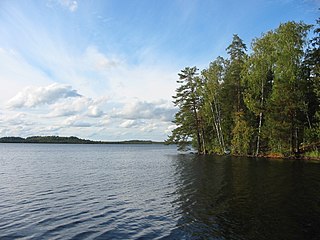
Kurjenrahka National Park is a national park in Southwest Finland. It was established in 1998 and covers 29 square kilometres (11 sq mi). The area consists mainly of bog but also includes primeval forests, some of which have been unmanaged for over 150 years. The Eurasian lynx is a permanent resident of Kurjenrahka, but brown bears and gray wolves have also been observed and are known to reside in areas within or close to the park. Marked trails in the general area extend to over 300 km.
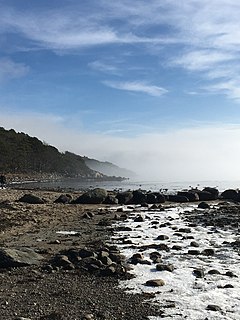
Archipelago National Park is a national park in Southwest Finland. It was established in 1983 and includes 500 km2 (190 sq mi) of land area. Most of the land is on islands smaller than 1 km2 (0.39 sq mi). The park encompasses about 2,000 of the 8,400 islets and skerries within the cooperative area. The larger islands are mainly owned by their inhabitants. Archipelago National Park is part of the UNESCO biosphere reserves and received a PAN Parks certificate in 2007.

Eastern Gulf of Finland National Park is a national park in the Kymenlaakso region in Finland. It was established in 1982 and covers 6.7 square kilometres (2.6 sq mi) on land. The park consist only of small islands and islets, some of which grow forest, mostly pine trees.

Kuivasaari is a Finnish island in the Gulf of Finland, near Helsinki.

The Military Museum of Finland is the central museum of the Finnish Defence Forces and the national special museum of military history. It is located in Helsinki and it is part of the Finnish National Defence University. In 2018, the Military Museum's exhibitions in Suomenlinna had around 131,000 visitors. The most popular exhibition is the submarine Vesikko, visited by around 50,000 people annually. Military Museum's exhibitions in Suomenlinna are located at Manege and Artillery Maneage.

The Krepost Sveaborg was an Imperial Russian system of land and coastal fortifications constructed around Helsinki during the First World War. The purpose of the fortress was to provide a secure naval base for the Russian Baltic fleet and to protect Helsinki and block routes to Saint Petersburg from a possible German invasion. Krepost Sveaborg was part of Peter the Great's Naval Fortress, a coastal fortification system protecting access to Saint Petersburg by sea. The central part of Krepost Sveaborg was the old fortress of Suomenlinna where the fortress headquarters were located. Due to technological advances in artillery the old fortress was no longer capable of providing a sufficient protection, and a new main defensive line was built well beyond the old fortress boundaries. New coastal artillery guns built on outlying islands protected Krepost Sveaborg from the sea, while fortified lines constructed around Helsinki were intended to stop any attacks on land. The primary coastal guns were 10 in (254 mm) model 1891 guns and 6 in (152 mm) model 1892 Canet guns. Older 11 in (279 mm) model 1877 guns were also used. In summer 1917 the fortress had two hundred coastal or anti-landing guns, of which 24 were 10-inch guns in six batteries, 16 were 6-inch Canet guns in four batteries and twelve were 11-inch guns in three batteries. The artillery used in land fortifications included older coastal guns, old fixed carriage guns and newer light field guns. In March 1917, Krepost Sveaborg had a total of 463 guns, although many of them were obsolescent. Krepost Sveaborg was still partly incomplete in 1917 when the February Revolution halted most of the construction work. Some further construction work was carried out during the remaining year, but all work halted during the October Revolution. Following the Finnish Declaration of Independence, parts of the land fortifications were used in the Finnish Civil War. The coastal fortifications were later taken over by Finland to protect Helsinki, while the land fortifications were mostly abandoned and disarmed.
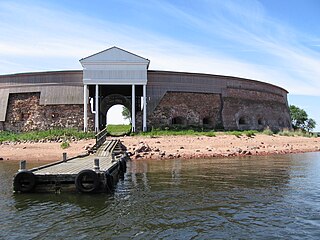
Ruotsinsalmi sea fortress is a fortification system in Kotka, Finland. It is part of the South-Eastern Finland fortification system built by Russia after Russo-Swedish War of 1788-1790. Ruotsinsalmi sea fortress formed the southern part of a double fortress together with Kyminlinna and it was built to counter the Swedish sea fortresses of Svartholm in Loviisa and Sveaborg (Suomenlinna) in Helsinki. Ruotsinsalmi also acted as an outpost of the Kronstadt sea fortress in Saint Petersburg. During the Crimean War, a British-French fleet destroyed the Ruotsinsalmi fortifications in 1855.

Isosaari is an island in Helsinki, part of the Ulkosaaret district of the city, more specifically of Itäsaaret, i.e. ‘eastern islands’. It was one of the fortified islands of the Gulf of Finland. Isosaari is one of the outermost islands in the Helsinki region, and it is a site that is important from the perspective of cultural history. Its sights and its nature are unique.

Lonna is a small island off Helsinki, opposite the Suomenlinna ferry terminal. The island belongs to the Suomenlinna district. Lonna is about 150 meters long and the distance to the mainland is about 1.5 kilometers.

The Governing Body of Suomenlinna is a bureau belonging to the Ministry of Education and Culture in Finland, whose task is to restore, maintain, demonstrate and govern the island fortress of Suomenlinna, a Unesco World Heritage, in Helsinki, Finland. The governing body was founded in 1973 when ownership of Suomenlinna was transferred from the Finnish Defence Forces to a civilian government. The organisation is divided into four units, consisting of government, maintenance, world heritage and restoration services.
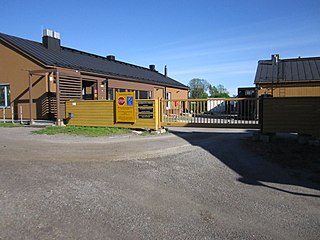
The Suomenlinna prison is an open prison in Suomenlinna, Helsinki, Finland, founded in 1971. It was previously known as the Suomenlinna penal colony. The prison is located at the southern tip of the island of Iso-Mustasaari. The prison was founded to help in the repair and restoration work of the Suomenlinna fortress; the prison co-operates with the Governing Body of Suomenlinna belonging to the Finnish Ministry of Education. Prisoners in the open prison, nicknamed Konnala work on weekdays in various jobs all over the island, under supervision. Most particularly they repair the buildings and stonework in Suomenlinna or maintain the scenery.






















